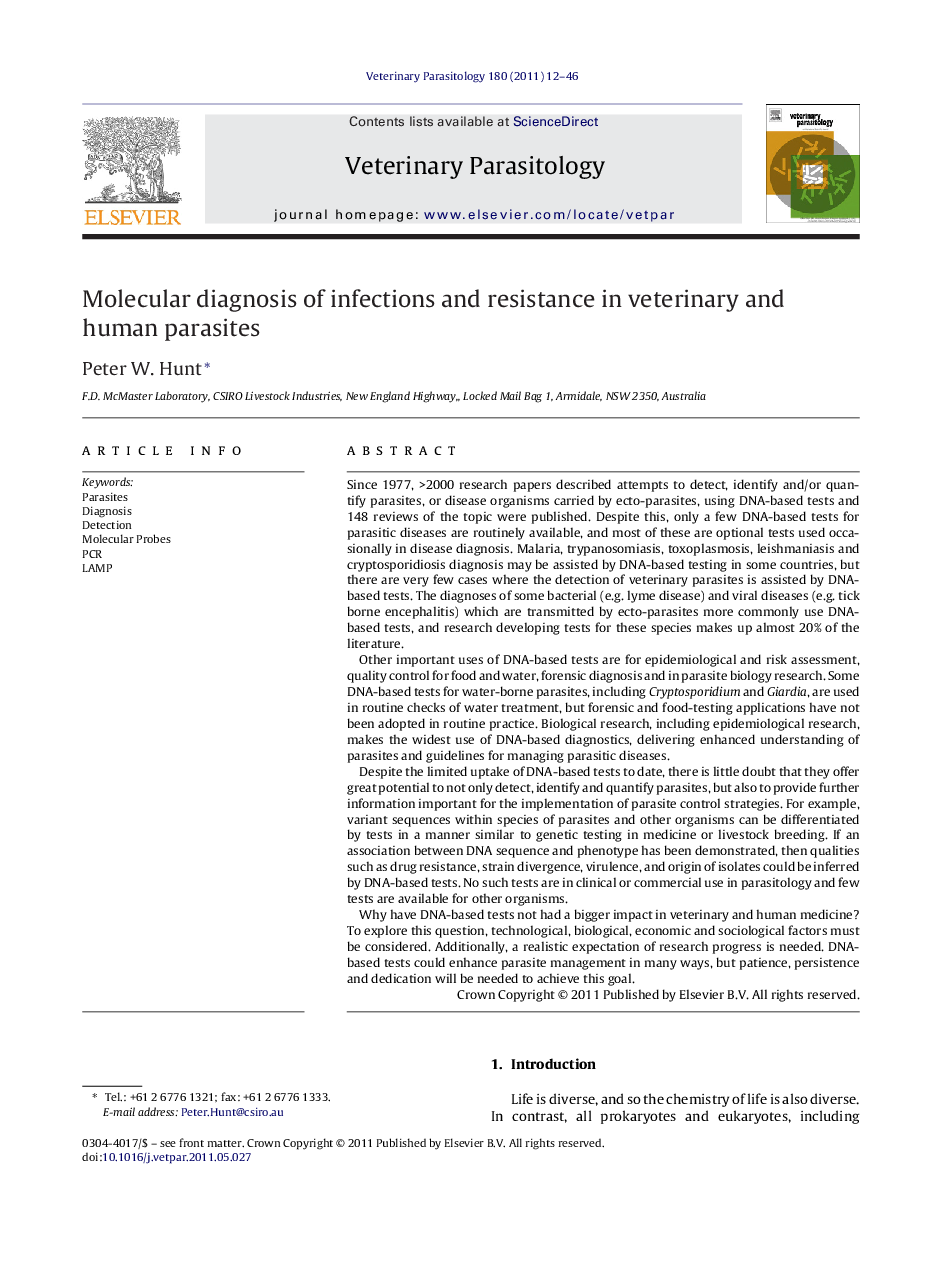| Article ID | Journal | Published Year | Pages | File Type |
|---|---|---|---|---|
| 5805818 | Veterinary Parasitology | 2011 | 35 Pages |
Since 1977, >2000 research papers described attempts to detect, identify and/or quantify parasites, or disease organisms carried by ecto-parasites, using DNA-based tests and 148 reviews of the topic were published. Despite this, only a few DNA-based tests for parasitic diseases are routinely available, and most of these are optional tests used occasionally in disease diagnosis. Malaria, trypanosomiasis, toxoplasmosis, leishmaniasis and cryptosporidiosis diagnosis may be assisted by DNA-based testing in some countries, but there are very few cases where the detection of veterinary parasites is assisted by DNA-based tests. The diagnoses of some bacterial (e.g. lyme disease) and viral diseases (e.g. tick borne encephalitis) which are transmitted by ecto-parasites more commonly use DNA-based tests, and research developing tests for these species makes up almost 20% of the literature.Other important uses of DNA-based tests are for epidemiological and risk assessment, quality control for food and water, forensic diagnosis and in parasite biology research. Some DNA-based tests for water-borne parasites, including Cryptosporidium and Giardia, are used in routine checks of water treatment, but forensic and food-testing applications have not been adopted in routine practice. Biological research, including epidemiological research, makes the widest use of DNA-based diagnostics, delivering enhanced understanding of parasites and guidelines for managing parasitic diseases.Despite the limited uptake of DNA-based tests to date, there is little doubt that they offer great potential to not only detect, identify and quantify parasites, but also to provide further information important for the implementation of parasite control strategies. For example, variant sequences within species of parasites and other organisms can be differentiated by tests in a manner similar to genetic testing in medicine or livestock breeding. If an association between DNA sequence and phenotype has been demonstrated, then qualities such as drug resistance, strain divergence, virulence, and origin of isolates could be inferred by DNA-based tests. No such tests are in clinical or commercial use in parasitology and few tests are available for other organisms.Why have DNA-based tests not had a bigger impact in veterinary and human medicine? To explore this question, technological, biological, economic and sociological factors must be considered. Additionally, a realistic expectation of research progress is needed. DNA-based tests could enhance parasite management in many ways, but patience, persistence and dedication will be needed to achieve this goal.
⺠DNA-based tests for detection, identification and quantification of parasites are reviewed. ⺠More than 30 years of research have led to more than 2000 publications on the topic. ⺠Technological change has driven improvements in DNA-based tests over time. ⺠After much research, DNA-based tests for parasites are now being adopted for routine commercial and clinical use.
